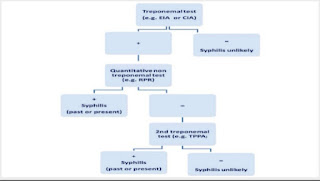Thymic Cysts vs Other Anterior Mediastinal Lesions: Imaging Clues Every Radiology Resident Should Know
Hello Glias !
The anterior mediastinum is home to some of the most commonly encountered masses on chest imaging. Thymic cysts are benign, fluid-filled lesions but can easily be mistaken for neoplastic processes like thymoma, germ cell tumors, or lymphoma. Accurate differentiation avoids unnecessary surgeries and anxiety.
What Are Thymic Cysts
• Benign lesions arising in the thymus or thymopharyngeal tract
• Uni- or multilocular
• Can be congenital or acquired (infection, radiation, autoimmune disease)
They frequently appear during an evaluation for unrelated symptoms or cancer staging.
CT Clues
On CT, a thymic cyst typically shows fluid attenuation, meaning it appears near water density. Some cysts may look slightly denser if they contain protein or blood products, but they still lack soft tissue nodularity.
A true cyst shows no internal enhancement. At most, you may see a very thin enhancing rim corresponding to the capsule. If any mural nodularity or solid enhancing component is present, you should consider thymoma or another tumor.
Thymomas tend to be soft tissue in density with a lobulated contour, and they enhance following contrast. Germ cell tumors are often heterogeneous, sometimes containing fat or calcification, which strongly favors diagnoses like teratoma. Lymphoma usually forms smooth but bulky soft-tissue masses that may encase vessels yet rarely calcify.
Thymic cysts generally do not distort or replace the thymic gland. They simply mingle with or gently expand its contour. Distortion of normal anatomy leans away from a cyst.
MRI Clues
On MRI, the distinction typically becomes more obvious. A thymic cyst is T2 bright and uniform. It has low to intermediate T1 signal, though T1 may rise if the cyst is protein rich or contains prior hemorrhage.
After contrast administration, a cyst does not enhance internally. Only a thin capsule may take up contrast. In contrast, thymomas and other tumors demonstrate solid areas that enhance.
Diffusion-weighted imaging also helps. Cysts do not show restricted diffusion, while cellular tumors often do.
Context Matters Too
You can improve confidence by integrating clinical background. A history of prior thoracic radiation, autoimmune disorders like Sjögren syndrome, or HIV infection increases the likelihood of an acquired thymic cyst. Slow change or long-term stability on past imaging strongly supports a benign cyst, whereas progressive growth signals neoplastic pathology.
When a thymic cyst becomes complicated by infection or hemorrhage, it may show higher density, internal debris, or mild wall thickening, adding confusion. MRI or short interval follow-up usually resolves the uncertainty.
Quick Mental Checklist
When reading the scan, you are likely correct with a thymic cyst diagnosis if you see:
• Fluid-like appearance on CT without solid parts
• No suspicious enhancement
• Uniformly bright T2 signal on MRI
• No restricted diffusion
• Smooth outline with no invasion of adjacent fat or vessels
• Consistent appearance on prior scans
Your job is not to name the cyst subtype. Your job is to confidently say whether something is solid or cystic, and whether it is benign-appearing or concerning. Thymic cysts are common, reassuring, and very low concern when they show the classic features above. Distinguishing them correctly prevents unnecessary biopsies or surgeries and keeps patient care on the right track.
- Dr. Upasana Y



Comments
Post a Comment